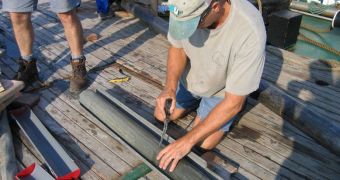For many years, experts have believed that organisms change in order to adapt to adversities in their environment, including microbial invaders. But new discoveries are showing that species of viruses can coexist with certain species of algae for several centuries.
The weird thing about this is that the neither of the two organisms changed in response to the other's presence. In humans, for example, the immune system adapts to destroy foreign invaders, which in turn adapt to become smarter than immune cells.
This results in a never-ending struggle between invaders and the invaded organisms. Oddly enough, when experts analyze the DNA contained in sediments extracted from the Black Sea, they found that species of algae were perfectly capable if living with the same invader for centuries on end.
What this work implies is that the role played by viruses in shaping oceanic and freshwater ecosystems may have been largely ignored. The new study was coordinated by experts at the Woods Hole Oceanographic Institution (WHOI).
“The finding that the DNA of viruses and their algal hosts can be preserved in the geologic record is of great interest to microbial ecologists,” explains researcher Marco Coolen, a WHOI scientist.
“It offers unprecedented insights into long-term algal, viral and host population dynamics between globally important algae and their viral pathogens in the ocean,” the team member goes on to say.
He is also the author of a new scientific paper describing the findings, which is published in the latest issue of the top journal Science. The investigation was conducted with funds secured from the US National Science Foundation (NSF).
“We know that viruses play an important role in phytoplankton population dynamics in today's oceans. This research shows that this was also true in the distant past,” NSF Division of Ocean Sciences official David Garrison explains.
The new study was conducted in the Black Sea. Experts extracted genetic records that were more than 7,000 years old, which had been preserved under layers of sediment. It was found that the viral agent Coccolithovirus could live with its host, Emiliania huxleyi, for centuries.
E. huxleyi is a species of phytoplankton, one of the microscopic organisms that represents the bottom of the marine food webs. These creatures are also responsible for extracting carbon dioxide from the atmosphere, which contributes to the acidification of oceans.
“Biologists now have a picture of long-term viral/host dynamics in the ocean. Previous laboratory work had confirmed such co-existence for only a few successive years,” Coolen explains.
“Comparable studies could be employed in a wide variety of marine and lake ecosystems. In a different and broader context," he added, "it may be possible to reconstruct the historical spread of human viral diseases, since a variety of human viral infections are also caused by DNA viruses,” he concludes.

 14 DAY TRIAL //
14 DAY TRIAL //